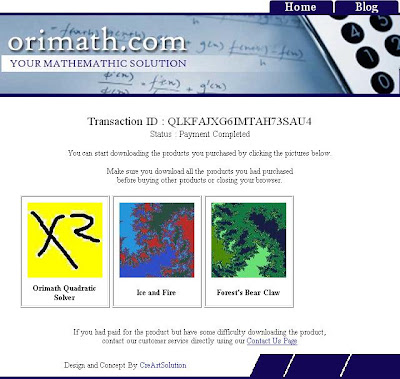The mathematic detail of calculation provided by RTC7681 is provided
here.
This post will focus on what kind of graphs RTC7681 is capable to produce. In short, RTC7681 is a calculator that calculate in detail the value of various variables involved in a relativistic travel. Instead of simply relating the maximum speed to various variables, RTC7681 also take the fact that the mass of fuel used to provide acceleration decrease over time during both acceleration and deceleration phase into consideration. The consideration about fuel mass depletion during both acceleration and deceleration phase is intended to provide more detail about the nature of relativistic travel, since there seems to be statistically significant percentage of people ( including me in the past ), who have wrong impression about the mass dilation as mass increase from nowhere. The mass increase during relativistic travel, actually did not come from nowhere, it come from the potential energy stored initially in the ship as fuel.
The examples of the graph below depicts the change in several variables value during relativistic travel for a spaceship massing 1 metric tons, carrying 10 metric tons of fuel, with engines capable of burning 0.08 kilograms of fuel per second and convert the fuel mass into kinetic energy at 0.1 efficiency ( 8.987551 1015 Joule / kg = 0.1 c2 ).
Changes in Velocity over time
The spaceship's velocity during a relativistic travel is not always constant. During both the acceleration and deceleration phases, the velocity changes as the spaceship accelerate or decelerate. The mass dilation effect increase the total mass, while burning the fuel for acceleration decrease the mass. Since the amount of fuel burned during both acceleration and deceleration phase is assumed to be constant, the change in mass affect the change in the amount of acceleration the engines are capable to provide.

Changes in Velocity over time
( Fuel Burned during Acceleration Phase 50%)

Changes in Velocity over time
( Fuel Burned during Acceleration Phase 76.833%)
Changes in Acceleration over time
The amount of fuel burned during both acceleration and deceleration phase are assumed to be constant. However since the total mass of the spaceship changes due to loss of mass by fuel and dilation of mass due to relativistic effect, the spaceship's acceleration provided by the engine do change over time during both acceleration.

Changes in Acceleration over time
( Fuel Burned during Acceleration Phase 50%)

Changes in Acceleration over time
( Fuel Burned during Acceleration Phase 76.833%)
IRF Distance Travelled over time
IRF Distance Travelled, is the distance travelled by the spaceship over time, as observed by an observer in an Inertial Reference Frame (IRF). Said observer in Inertial Reference Frame could be in the origin or in the destination point. The distance travelled by the spaceship is the result of finite integration of its velocity function over time.

Distance Travelled over time
( Fuel Burned during Acceleration Phase 50%)

Distance Travelled over time
( Fuel Burned during Acceleration Phase 76.833%)
IRF Ship's Mass over time
IRF Ship's Mass is the mass of spaceship as observed by an observer in an Inertial Reference Frame (IRF). Said observer in Inertial Reference Frame could be in the origin or in the destination point. Since the velocity of the ship change during both acceleration and deceleration phase, observers in Inertial Reference Frame are going to observe change in the amount of mass dilation during these both phases.

IRF Ship's Mass over time
( Fuel Burned during Acceleration Phase 50%)

IRF Ship's Mass over time
( Fuel Burned during Acceleration Phase 76.833%)
SRF Fuel Mass over time
SRF Fuel Mass is the amount of fuel available in the spaceship over time, as observed by observers inside the Ship's Reference Frame (SRF). Since the amount of fuel burned per unit time is assumed to be constant in this model, we should not expect anything other than two linear graphs with equal gradient, separated by a horizontal line.

SRF Fuel Mass over time
( Fuel Burned during Acceleration Phase 50%)

SRF Fuel Mass over time
( Fuel Burned during Acceleration Phase 76.833%)
IRF Total Mass over time
IRF Total Mass is the mass of the ship added with the mass of fuel still available in the ship, as observed by observers in an Inertial Reference Frame. Said observer in Inertial Reference Frame could be in the origin or in the destination point. Preservation of energy will make it impossible for the spaceship to gain mass without losing its fuel mass.

IRF Total Mass over time
( Fuel Burned during Acceleration Phase 50%)

IRF Total Mass over time
( Fuel Burned during Acceleration Phase 76.833%)





























































